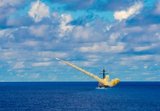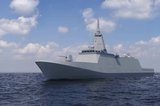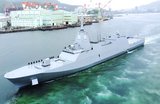Insight: What is the way forward for the propulsion systems of conventional submarines?
In September 2024, Naval Group was awarded a contract to deliver four Orka-class submarines as part of the Walrus Replacement Programme (Image: Naval Group).
AIP has served as a reference point for all countries operating non-nuclear submarines for decades. For example, the Netherlands, which operates older diesel-electric submarines equipped with traditional batteries, has long viewed the future adoption of next-generation AIP submarines as the most logical choice for their procurement needs. Recent developments in LIBs, however, have shuffled the deck in the underwater domain, making AIP-equipped submarines a less obvious procurement option.
Air independent propulsion vs full lithium-ion battery configuration
Whether based on fuel cells or Stirling engines, the AIP system provides energy directly to the electric motor that drives the submarine propeller. The
Already have an account? Log in
Want to keep reading this article?
More from Naval Warfare
-
![NATO tests use of “undetectable, jam-proof” laser communication in maritime scenarios]()
NATO tests use of “undetectable, jam-proof” laser communication in maritime scenarios
As part of its effort to better prepare its capabilities for operations in contested and congested scenarios, NATO evaluated a Lithuanian ship-to-ship terminal designed to not be susceptible to enemy interference.
-
![Mitsubishi eyes future with Australia’s Mogami selection]()
Mitsubishi eyes future with Australia’s Mogami selection
With Australia’s selection of the Mogami-class for Project Sea 3000, Mitsubishi is investigating local production in the next decade as potential export opportunities emerge.
-
![Hanwha wins Australian government approval to increase its stake in Austal]()
Hanwha wins Australian government approval to increase its stake in Austal
The contract would mean the two shipbuilders can collaborate strategically and enhance shipbuilding capabilities in Western Australia.






















